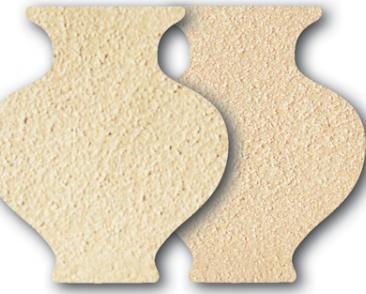Clay body questions.
- Madeline Wynne
- Mar 12, 2022
- 3 min read
Updated: Mar 14, 2022
At the start of this semester I bought 50kg of ES40, to use during Practice 3. I have found a couple of issues with this clay body.

Firstly when I score and wet the edges of the slabs prior to joining they lose all firmness and are easily distorted by tools, sticks and fingers. This distortion is considerably more than any other clay body I have used. I have now made nine pieces with this clay, and whilst it has become easier to manage over time, and I have adapted to it, other clays retain their shape better than this. The result is a lot of time cleaning up the joins, but the end result is good, so this is not a deal-breaker. I have fired these pots to bisque, and so far the joins remain intact
Secondly, I have tried a dozen glaze tests, both reduction and oxidation, and after firing the ES40 clay becomes a lot darker. As a result the contrast with the white molochite become very apparent. With an opaque glaze this would not really matter, but with a celadon or transparent glaze, it is very obvious.
I showed Rob the test tiles, he suggested that I try a Porcelain White body, Valentines 700G. The clay body is very white, and so the molochite is less visible. Rob has some of this clay, and kindly offered to let me try some. The trade off is that this clay is much more difficult to use for slab-building than the ES40. Although the whiteness is an added bonus. Rob has some of this clay, and kindly offered to let me try some.

Rob however has covid this week, so I emailed Mark Cumberlidge at Valentines, to explain the issues and see whether there were any other alternatives. He said that all clays with molochite would have the same issue with contrast between the clay body and the molochite. He also suggested the PF700G, and agreed that due to the higher ball clay content it would be more difficult to manage. He also had some additional reservations about glaze fit as the 700G shrinks a lot more than the ES40. So this will need to be tested before any switch could be made.
I asked Mark whether it would be possible to sacrifice some whiteness from the molochite in order to maintain some slab building qualities. He said that there was another type of grog in the St Patricks white, silica sand, and this did not have a contrast issue with the clay body at high temperatures. It has good slab building properties, and the grog is finer (despite the image below), so this should be a bonus for carving and etching.

So, it seems there is a second option to try. Fortunately Helen responded to a WhatsApp message and has some leftover St Patrick's so we arranged a swap for one of my clay bodies. She has used it in the past for a plate, which unfortunately sagged, and an etched vessel that is slightly warped. Looking at the vessel we could not distinguish the grog from the clay, and her etching worked well too. So this seems like a possibility, subject to any issues with warping.
I have three clay bodies to try now, the PF700G, the St Patricks White, and the Porcelain Grogged that I bought, but have not tried yet on a full sized piece . I can then compare them and see whether any present a better option than the ES40.
I have never been interested in clay bodies, but I have suddenly become a clay body geek!



Comments